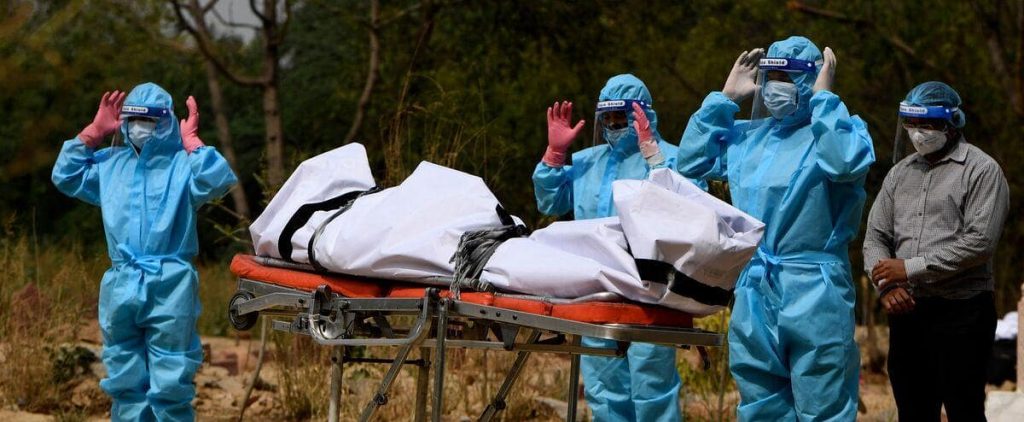
Identified in at least 17 countries, the Indian variant of the coronavirus is of concern due to the spectacular deterioration of India’s health condition, but experts emphasize that it alone is not responsible.
Also read: Kovid-19: The first case of the Indian variant was discovered in France
Also read: Can be found in any country in the situation of India
Also read: India: 200,000 die from COVID-19, hospitals in Delhi sink
Named after its line (B.1.617), it was placed on the WHO’s list of “variations of interest” on Tuesday, with problematic genetic traits justifying vigilance.
This is the next category of “worrying variants”, now three numbers (English, South African and Brazilian).
Like all three, its genetic characteristics raise concerns that it is more contagious.
The WHO explained at a point on Tuesday that the first observations “have a higher growth rate than other variants in circulation in India, indicating greater transmissibility”.
“It has been proven to be epidemiological,” the Scientific Council, which guides the French government, said in a statement on Monday.
The prognosis of infection of variants is actually based on epidemiological data: researchers observe how quickly they spread and how contagious they are.
In this perspective, the situation in India plays into fears. The country announced a new world record of 385,000 new infections and nearly 3,500 deaths in the last 24 hours on Friday morning and images of its cemetery drowning with corpses toured the world.
But beyond the internal features of the variant, “other drivers” can describe the explosion that hit India, stressing the WHO, by referring to “large population groups” whose barriers are not well respected.
“Exaggeration”
“India is coming out of the election period with a lot of unrestricted gatherings. Overall, the level of preventive measures taken appears to be very low. Due to very strong cultural factors, including religious traditions, public bathing in the Ganges at some festivals has so far been preserved,” the French Scientific Council added.
“More research is needed to understand the relative share of these factors,” the WHO argues, recalling that other variations are circulating in India, the main one being the English variant.
Moreover, in addition to its epidemiological question, experts fear that the effectiveness of the Indian variant vaccines will be reduced, as will the South African and Brazilian variants.
We currently have very little data. An open study on April 23 found that the covaxin vaccine (from the Indian laboratory Bharat Biotech) was less effective against this variant than the historic virus in terms of antibody production.
Many experts who have encountered these strangers are warning against the very disturbing presentations of the Indian variant.
“For now, I think it’s an exaggeration for the media to treat it, ” Christian Drosten, a virologist advising the German government, predicted on Tuesday in a podcast of Radio NDR information.
According to the French Scientific Council, there are fears about the Indian variant because of the “already known but hitherto unrelated mutations” known as the L452R and E484Q.
The “combination” of these two mutations sometimes earned the variant “double mutant + inappropriate name” in the media, continuing the example.
On the European continent, France recognized its first cases after the United Kingdom, Germany, Belgium, Switzerland, Greece or Italy.






More Stories
Allegations of corruption Qatar warns of ‘negative impact’ of European measures
USA: Famous “Hollywood cat” euthanized in Los Angeles
The campaigner who called for the shooting of Ukrainian children has not been charged